While you typically think of warmer months in the spring and summer to plant vegetables, September isn’t too late to try out your green thumb. In fact, there are several different types of vegetables that can thrive as the weather takes a turn for milder conditions. Just make sure to choose fast-growing vegetables that can mature before the first frost of the season!
Ready to beat the summer sun and hit the garden? Here are 19 vegetables to plant in September.
Why Is September a Good Time to Plant Vegetables?
September can be a great time to plant vegetables in many different places. This is often due to the weather being more stable and sometimes cooler than in the summer months. Cooler temperatures and shorter daylight hours can help to reduce some of the stress on plants that too much heat can cause. This can help to stimulate strong root growth, which is vital for some plant life.
In some places, the soil is also still warm in September, which can help to promote germination and early regrowth. Cooler temperatures can help to reduce the risks of pests and diseases that are more commonly seen during the hot and humid summertime. Finally, planting in September can allow for a second growing season, which can sometimes extend the harvest and provide a greater variety of fresh produce throughout the year.
Some vegetables that are well-suited for fall planting include broccoli, cauliflower, kale, lettuce, spinach, and radishes, among others.
Best September Vegetables to Plant
What vegetables will thrive at particular times depends on where you’re in the world. In the United States, a system of zones can help you learn the best vegetables to plant in September in your area. However, here are 19 vegetables that are usually a safe bet for September sowing.
1. Beets
Beets can be harvested in both fall and winter if you’re looking for a bountiful harvest season. For a fall harvest, make sure to plant them at the end of summer. For winter, you can prolong this until fall. Unless you live in an area with warm winters, planting your beets anywhere from four to nine weeks before the season’s first frost is best. They can be harvested in around eight weeks after you first plant them.
You can eat both the tops and roots of the beet plant. When you think of this plant, it’s most common to think of the beetroot: the small, purple or red bulb that the roots extend from. No matter which part of the plant you decide to enjoy, beets pack a powerful, nutritional punch. They’re also easy to can or otherwise preserve for year-long use.
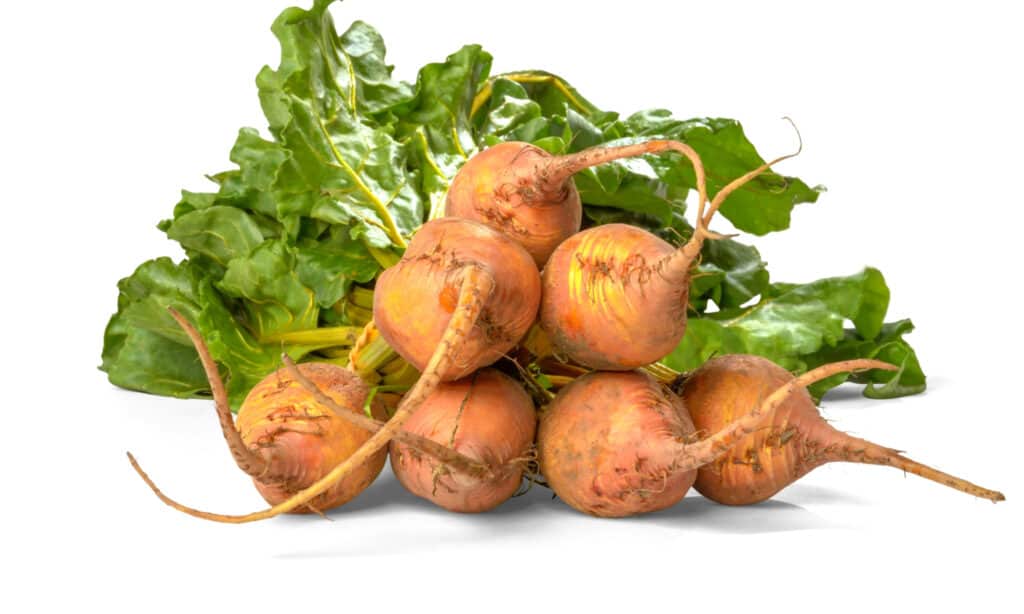
You can eat both the tops and roots of the beet plant.
©LifetimeStock/Shutterstock.com
2. Broccoli
Broccoli is a fairly hardy fall-time vegetable. As a result, they’re one of the best vegetables to plant in September. You can begin planting them in late summer into the beginning of fall, giving you time to figure out exactly how to run your garden. This is good because broccoli prefers loam soil, which you may need time to prepare. After your September sow season, however, you can expect to harvest most varieties of broccoli within eight to nine weeks.
The broccoli that you eat is actually a juvenile flower bud. A member of the cabbage family, you can eat the flowering head and stalks of the broccoli plant, and you can even eat some of the smaller leaves you may find in your harvest. Broccoli is high in the daily vitamins and minerals needed for health, and they also offers a large amount of protein compared to other vegetables.
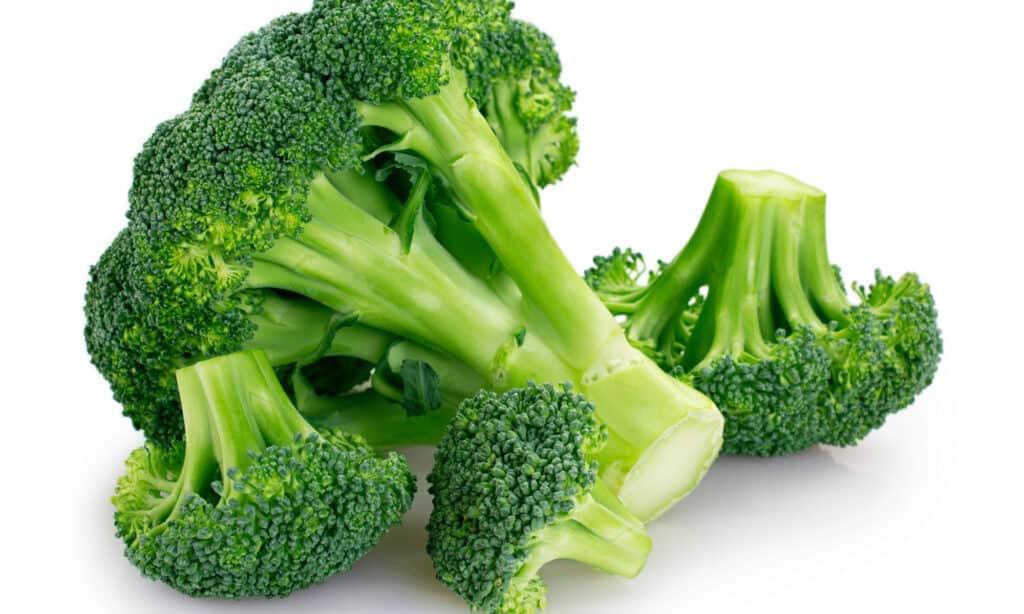
The broccoli that you eat is actually a juvenile flower bud.
©Valery121283/Shutterstock.com
3. Brussels Sprouts
Compared to the other vegetables on this list so far, Brussels sprouts require a long growing period. They thrive during cool weather and actually taste better when they’ve survived a frost or two. It takes around 100 days to enjoy your labor’s fruits (or vegetables) from planting to harvest. This makes them the perfect vegetable to plant in September for a rich winter harvest.
Brussels sprouts are a type of cabbage, and they’re related to broccoli, kale, and kohlrabi. Along with other crunchy vegetables, they’re one of the best ways to fight and prevent certain diseases and cancers naturally.
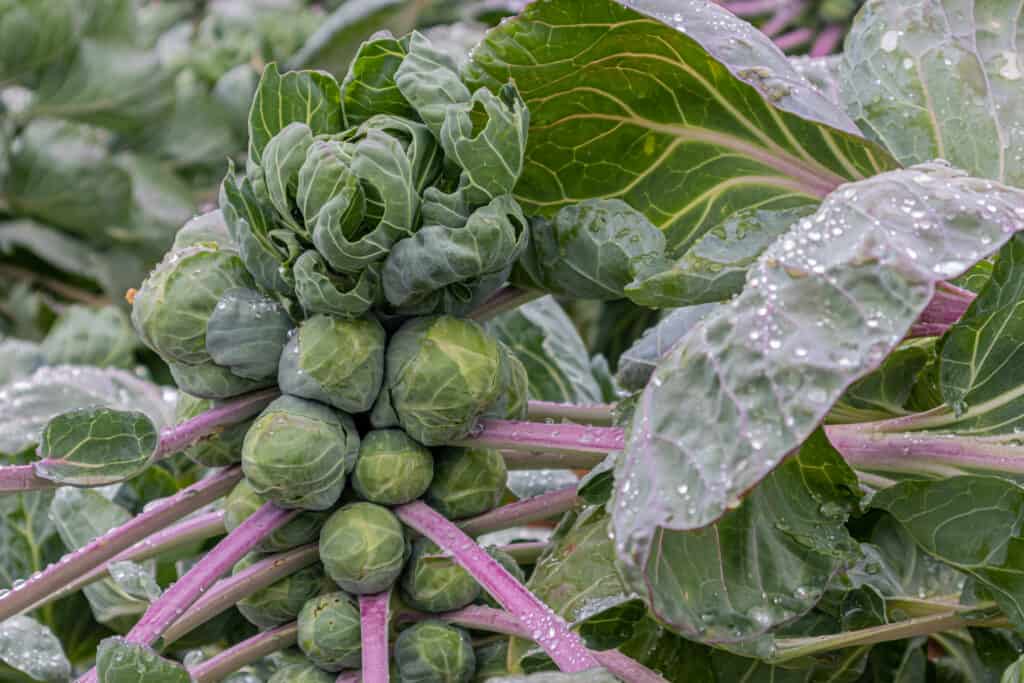
Brussels sprouts are a type of cabbage, and they’re related to broccoli, kale, and kohlrabi.
©mm7/Shutterstock.com
4. Carrots
The rule of thumb for carrots is that they can be sowed from the spring equinox in the middle of March to the fall equinox in the middle of September. In fact, you can sow a row every three or so weeks in order to have a carrot harvest year-round. Like Brussels sprouts, they have a long growing season of up to four months. By planting at least one row in September, you’ll have a carrot harvest just in time for your holiday dinners.
Carrots are rich in vitamins, minerals, fiber, and even antioxidants. They support gut health, can reduce the risk of certain diseases, and even help boost your immune system. However, it’s important not to eat more than one to two carrots daily. Any more than that, and you risk it turning orange due to an excessive amount of beta-carotene, which gives the carrot its color.
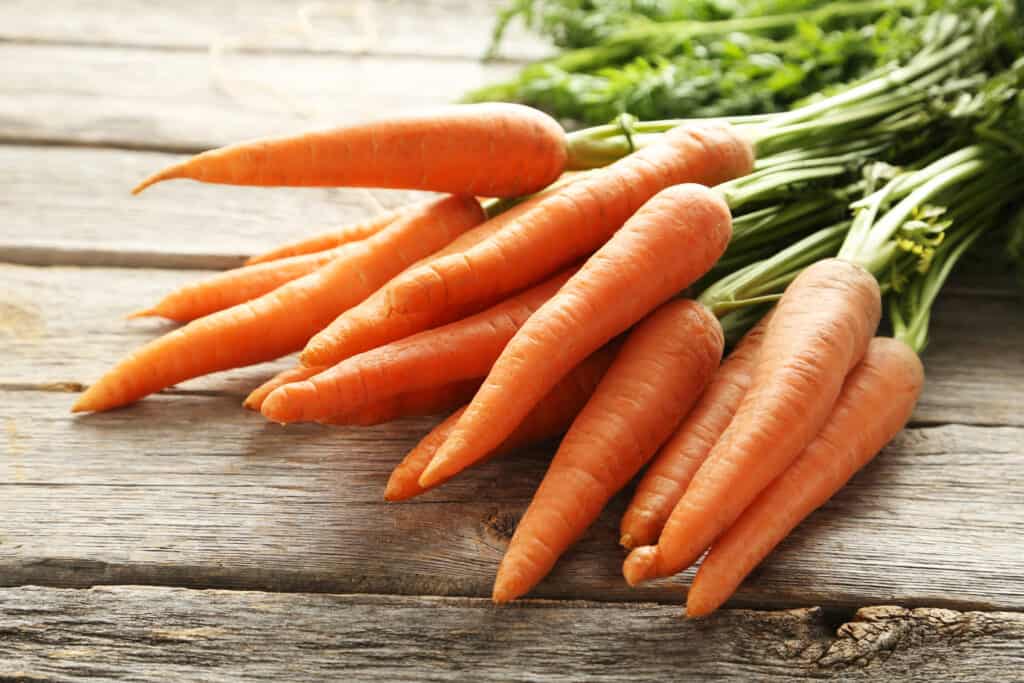
By planting at least one row in September, you’ll have a carrot harvest just in time for your holiday dinners.
©5 second Studio/Shutterstock.com
5. Cauliflower
Typically, cauliflower is harvested in September. However, it’s also possible to sow cauliflower in some areas in September for a winter harvest. Just make sure to check the temperature of the soil: it should be between 65°F and 75°F. You’ll also want to ensure that winters in your area are mild, with little to no frost. If you’re willing to sacrifice the size of your crop, you can also grow cauliflower inside! It takes around 80 days to harvest your cauliflower.
Cauliflower is often used as a substitute for meat in many recipes. However, whether it’s the star of the dish or a side, this September vegetable is rich in nutrients. It’s high in fiber and antioxidants and can easily be incorporated into a meal.
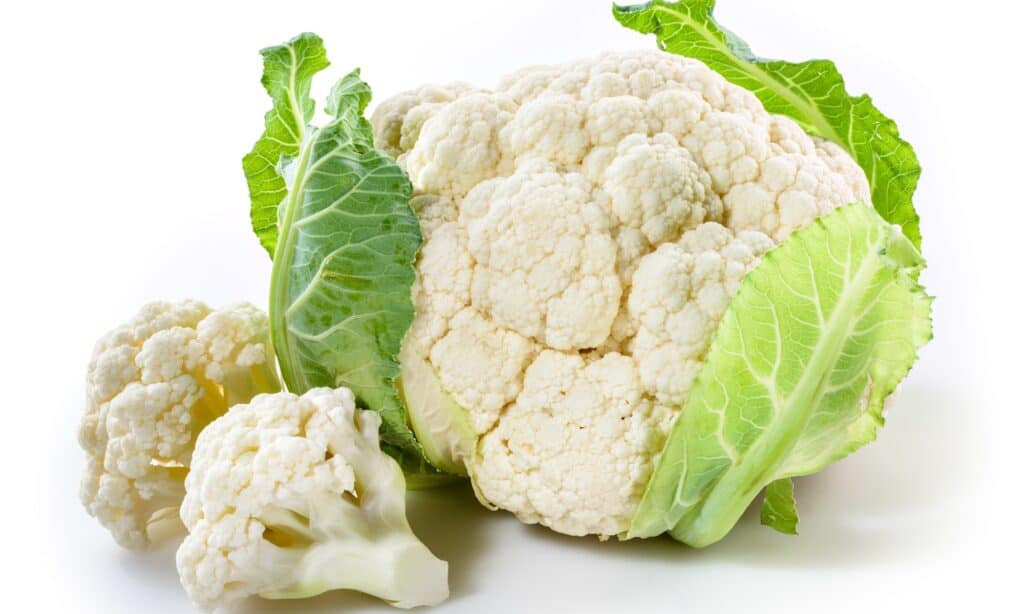
If you’re willing to sacrifice the size of your crop, you can also grow cauliflower inside!
©iStock.com/Tim UR
6. Celery
It takes around four months to grow celery. As a result, if you’re looking for a winter harvest, celery is one of the most popular vegetables to plant in September. You’ll want to ensure you start your seeds in advance so they can grow before the first frost date. Celery can also be grown from kitchen scrapes and kept indoors year-round.
Celery is rich in fiber and can be used to improve gut health and digestion. Due to the structure of its crunchy, fibrous stalks, it’s also good for dental health. That’s right – celery can act like a natural floss!

Celery is rich in fiber and can be used to improve gut health and digestion.
©Kaiskynet Studio/Shutterstock.com
7. Fava Beans
You can grow fava beans in three main months: September, October, and March. Like many beans, fava beans will reach maturity at one date but continue growing. So, although fava beans will reach maturity in about 80 days, you can harvest them up until about March for a September crop. For beginners, fava beans may be one of the best vegetables to plant in September due to their hardiness.
Although fava beans look similar to lima beans, they’re not the same. Fava beans have a milder, earthy taste that many people relate to nuts or cheese, and they’re high in protein and many other necessary nutrients.

Fava beans have a milder, earthy taste that many people relate to nuts or cheese.
©Ad van Brunschot/Shutterstock.com
8. Head Lettuce
Like many other leafy vegetables, head lettuce is a cool-weather crop, which means it grows best in the spring and fall. To enjoy fresh ingredients into the winter, you can plant head lettuce well into September, around the first three weeks. Most head lettuce reaches maturity within a month to three months, but you can harvest it whenever it reaches the desired size.
Head lettuce is also known as iceberg lettuce or crisphead lettuce. It’s not as nutrient-dense as leaf lettuce, but it offers a nice texture and sweetness to elevate your day-to-day meals and snacks.

To enjoy fresh ingredients into the winter, you can plant head lettuce well into September, around the first three weeks.
©Melica/Shutterstock.com
9. Kale
You don’t just have to sow kale in September; it can also thrive in May, June, and October. Kale is one of the hardest vegetables to plant in September, making them a great choice for diverse regions. Not only are they resistant to frost, but even snow! As a result, planting them often during September and other cool months can lead to a large harvest throughout the year. It takes up to 95 days for your kale harvest to be ready.
Kale is also known as leaf cabbage. They’re a leafy vegetable with a unique texture, making them a popular addition to sandwiches and salads.

It takes up to 95 days for your kale harvest to be ready.
©iStock.com/Ockra
10. Kohlrabi
It takes around 55 days for kohlrabi to mature for harvesting. They’re hardy enough to survive mild temperatures, making them a great addition to your September garden. You’ll want to plan your harvest for a week or two after the first frost of the fall season. As a result, timing is everything when starting and sowing your kohlrabi. You can start your seeds indoors up to six weeks early if needed.
Kohlrabi is an interesting vegetable, and they look similar to a turnip, which has earned them the names German turnip and turnip cabbage. It can be eaten raw or cooked and is popular in various dishes.
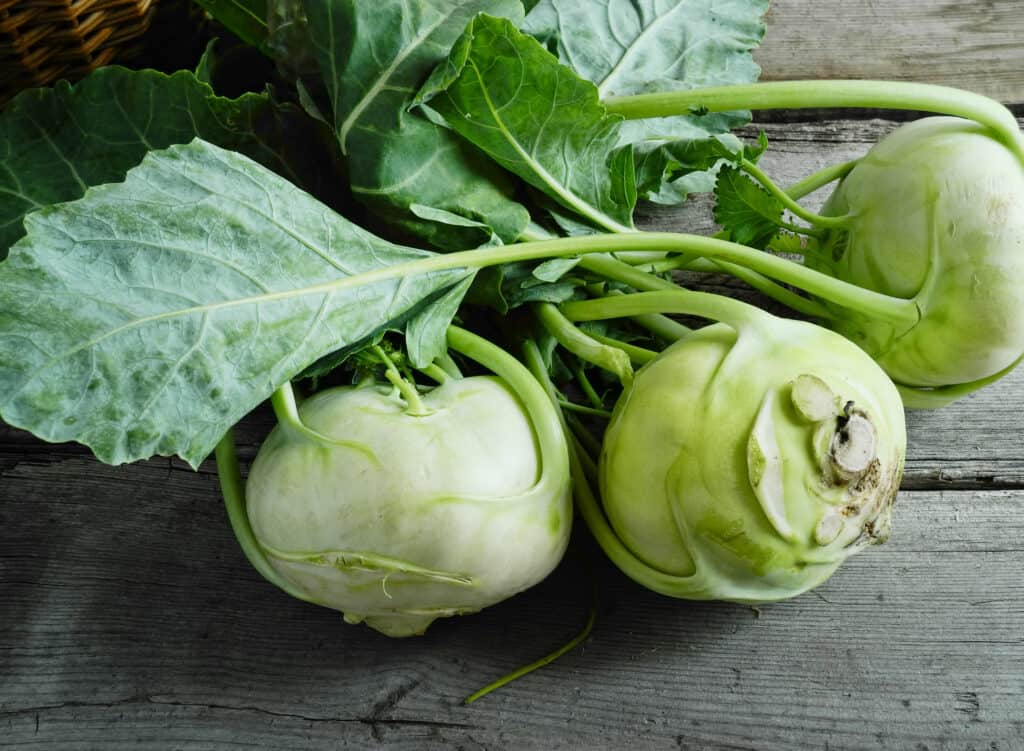
Kohlrabi is an interesting vegetable, and they look similar to a turnip, which has earned them the names German turnip and turnip cabbage.
©Haskounek/Shutterstock.com
11. Leeks
The middle of September is the end of the leek sowing season, and this is the best time to finish the year strong with a healthy harvest of leeks! Leeks have one of the longest maturity times out of all of the crops on this list. It can take up to 150 days, or around five months, for your leeks to reach full maturity.
Leeks are related to the onion, although they have a much milder and sweeter taste. They’re often used as a compliment to potatoes. Although it is common to only look at the white section of leeks, the leaves offer benefits when cooked correctly.
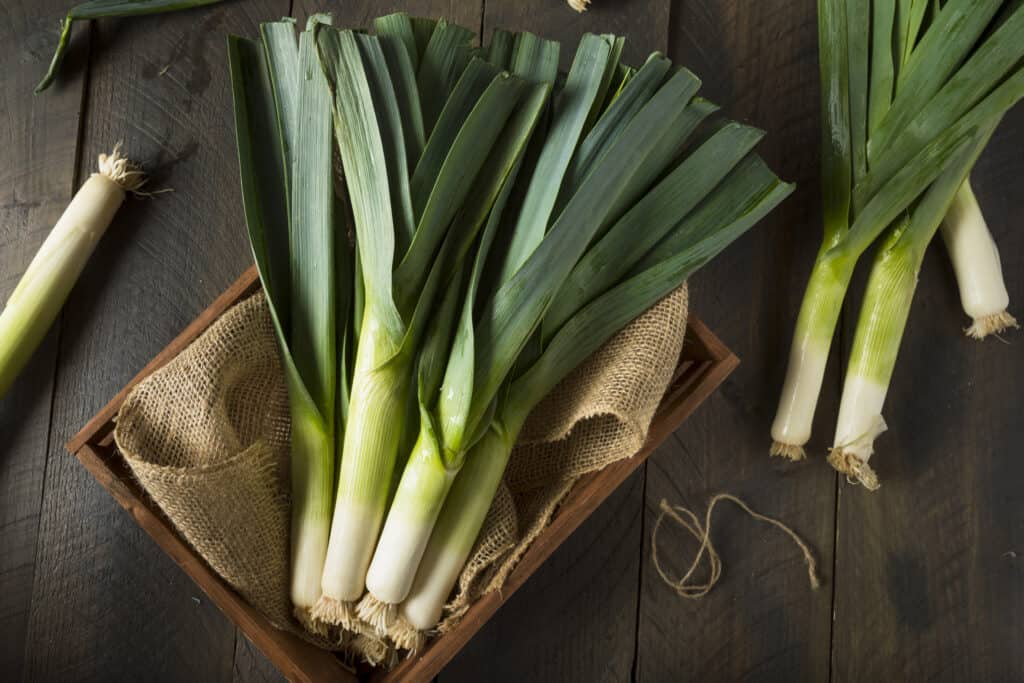
Leeks are related to the onion, although they have a much milder and sweeter taste.
©Brent Hofacker/Shutterstock.com
12. Leaf Lettuce
Leaf lettuce is related to head lettuce. However, rather than growing in a tightly knit rosette, leaf lettuce grows more freely, with bushels of leaves. They’re a fairly hardy plant and the perfect vegetable to plant in September. They can be harvested within a month of sowing, making them a quick crop to squeeze in at the end of the sowing season. Make sure to sow your last batch of leaf lettuce when there’s still plenty of time for them to grow and mature before the first frost of the fall season.
Leaf lettuce is one of the most versatile fall vegetables, and it’s great in salads, sandwiches, and wraps. The variations allow you to grow the perfect ingredients for different flavored meals.
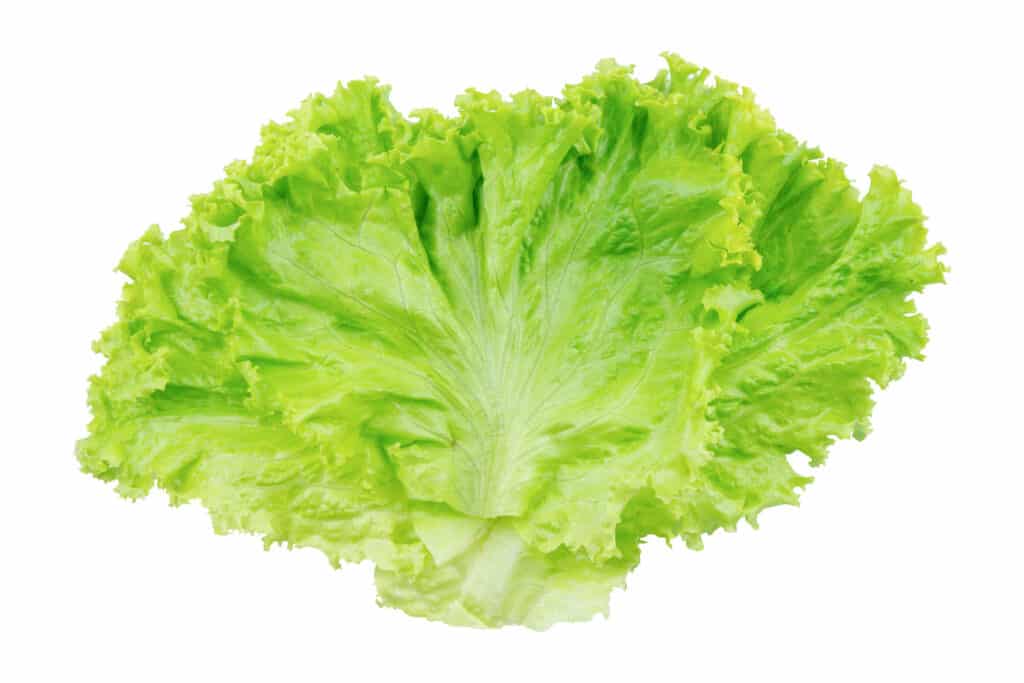
Leaf lettuce can be harvested within a month of sowing, making them a quick crop to squeeze in at the end of the sowing season.
©Achira22/Shutterstock.com
13. Mustard Greens
Although they’re similar, mustard greens aren’t the same as collards. One of the main differences is that you want to plant collards in early spring or late summer, while mustard greens can be planted in September. They’re fast growers, and depending on the size of leaves you want to harvest, you can pick your mustard greens between four and eight weeks!
Mustard greens can be eaten raw or cooked. They’re popular in salads for their texture and flavor. However, some people may find the flavor too strong, making cooking them a popular option as well. When it comes to cooking, most people choose to steam or stir-fry mustard greens, although the possibilities are endless.

Mustard greens are fast growers. You can pick your mustard greens between four and eight weeks!
©Svetlana Foote/Shutterstock.com
14. Onions
There are several varieties of onions. For more varieties, the best time to grow this popular vegetable is late summer to early fall. In fact, because of how they grow, they’re considered one of the best vegetables to plant in September. This gives the onions ample time to reach their full potential. Because they’re root vegetables, like potatoes, they’re hardy and can survive colder temperatures than other plants.
Onions are also especially easy to grow from kitchen scraps, which helps create an eco-friendly and low-cost garden that’s easy to start. You can grow them from scraps indoors and have an onion harvest within about 120 days or four months.

Onions are also especially easy to grow from kitchen scraps, which helps create an eco-friendly and low-cost garden that’s easy to start.
©nnattalli/Shutterstock.com
15. Parsley
Herbs like parsley are a subset of vegetables. Because parsley, in particular, is a cool-weather herb, it thrives in the latter months of the year. This includes September. However, they have a rather long growing season, so don’t expect a harvest within the same year! Instead, look to May and June for your first parsley harvest. Because they’re annuals, you will need to plant them again once September rolls back around.
Parsley is a popular ingredient and garnish for many dishes. Elevate your summer cooking with this powerful herb by taking advantage of their cool-weather growing season this September.

Parsley has a rather long growing season, so don’t expect a harvest within the same year!
©MarcoFood/Shutterstock.com
16. Peas
If you’re not quite ready to start your garden for the season and you’re looking for a vegetable to plant at the end of September, look no further than peas. Peas can be sowed through September to November, making them a great addition to a last-minute fall garden. Sowing around this time will lead to an early spring harvest.
Please pay attention to the variety in growing peas in the fall. While some peas can thrive when planted in September, some may need earlier sow times.
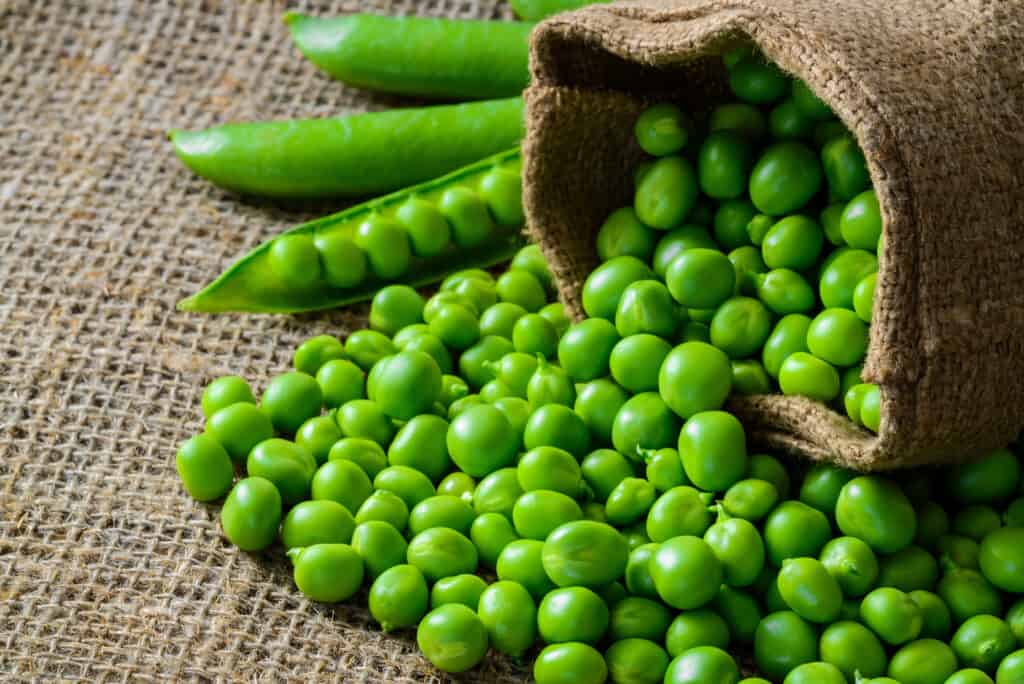
Peas can be sowed through September to November, making them a great addition to a last-minute fall garden.
©287797673/Shutterstock.com
17. Potatoes
Potatoes are one of the easiest vegetables to grow, and they’re also a popular vegetable to plant in September due to their lack of maintenance and overall hardiness. Although they’re typically planted in the spring, they can also thrive in a fall garden. In fact, planting them in September will give them plenty of time to grow and mature in time for the holidays.
Like onions and many other vegetables on this list, potatoes can be grown from kitchen scraps.
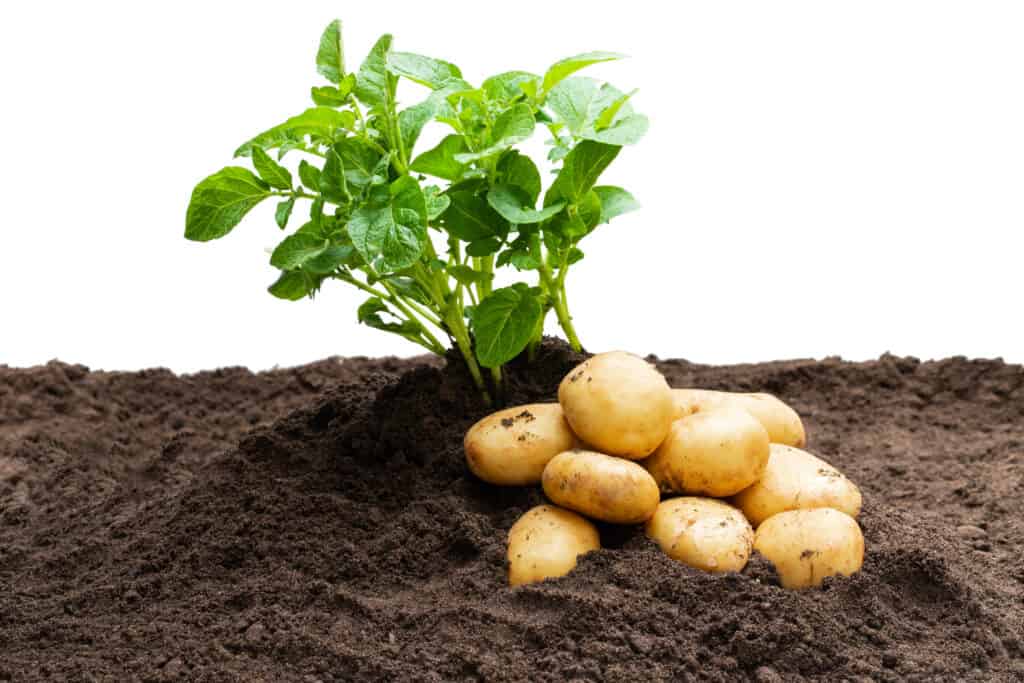
Although potatoes are typically planted in the spring, they can also thrive in a fall garden.
©Elena Zajchikova/Shutterstock.com
18. Radishes
To grow radishes in the fall, you’ll need to plant them earlier in September. However, they can thrive indoors all year long. They’re one of the fastest-growing plants on this list, with some being ready in as soon as three weeks. That’s right, as long as they’re of usable size, you can harvest radishes. It’s recommended to harvest them sooner rather than later because too much time underground can cause a decline in their taste and texture.
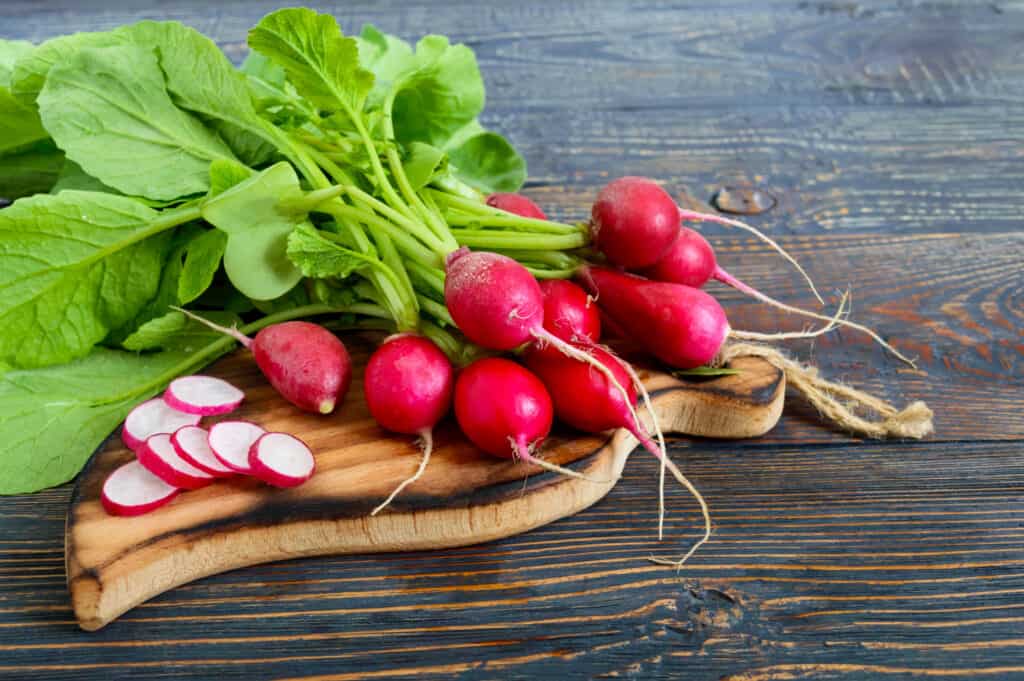
Radishes are one of the fastest-growing plants on this list, with some being ready in as soon as three weeks.
©Iaroshenko Maryna/Shutterstock.com
19. Rutabagas
Rutabagas are considered a cross between a turnip and a cabbage. They can be eaten raw or cooked, although the flavor can vary greatly between the two options. Like radishes, you can sow them in September and then harvest them until they’re of a usable size.

Like radishes, you can sow rutabagas in September and then harvest them until they’re of a usable size.
©Danler/Shutterstock.com
What Type of Animals Feed on Vegetables?
Many animals feed on vegetation or plants, including the following.
- Herbivores: These animals are specially adapted to eat only plants, such as deer, elephants, giraffes, rabbits, and pandas.
- Omnivores: These animals eat both plants and animals, such as bears, raccoons, and humans.
- Frugivores: These animals primarily eat fruit, such as monkeys and apes, and birds like parrots.
- Granivores: These animals primarily eat seeds, such as birds like finches and rodents like squirrels.
- Folivores: These animals eat leaves, such as horses, cows, and elephants.
- Nectarivores: These animals feed mainly on nectar, such as bees, butterflies, bats, and hummingbirds.
- Saprovores: These animals feed mainly on dead plant material, such as fungi and bacteria.
- Detritivores: These animals feed mainly on detritus or non-living organic material, such as worms and some insects.
Some insects also feed on vegetation or plant sap as well, like aphids, leafhoppers, and caterpillars.
| Vegetable | |
|---|---|
| 1. | Beets |
| 2. | Broccoli |
| 3. | Brussels sprouts |
| 4. | Carrots |
| 5. | Cauliflower |
| 6. | Celery |
| 7. | Fava beans |
| 8. | Head lettuce |
| 9. | Kale |
| 10. | Kohlrabi |
| 11. | Leeks |
| 12. | Leaf Lettuce |
| 13. | Mustard greens |
| 14. | Onions |
| 15. | Parsley |
| 16. | Peas |
| 17. | Potatoes |
| 18. | Radishes |
| 19. | Rutabagas |
The photo featured at the top of this post is © iStock.com/trangiap
Sources
- United States Department of Agriculture, Available here: https://planthardiness.ars.usda.gov/
- PLOS One, Available here: https://journals.plos.org/plosone/article?id=10.1371/journal.pone.0265439
- National Library of Medicine, Available here: https://www.ncbi.nlm.nih.gov/pmc/articles/PMC3139236/
- A-Z Animals, Available here: https://a-z-animals.com/blog/cauliflower-vs-broccoli-whats-the-difference/
Thank you for reading! Have some feedback for us? Contact the AZ Animals editorial team.






